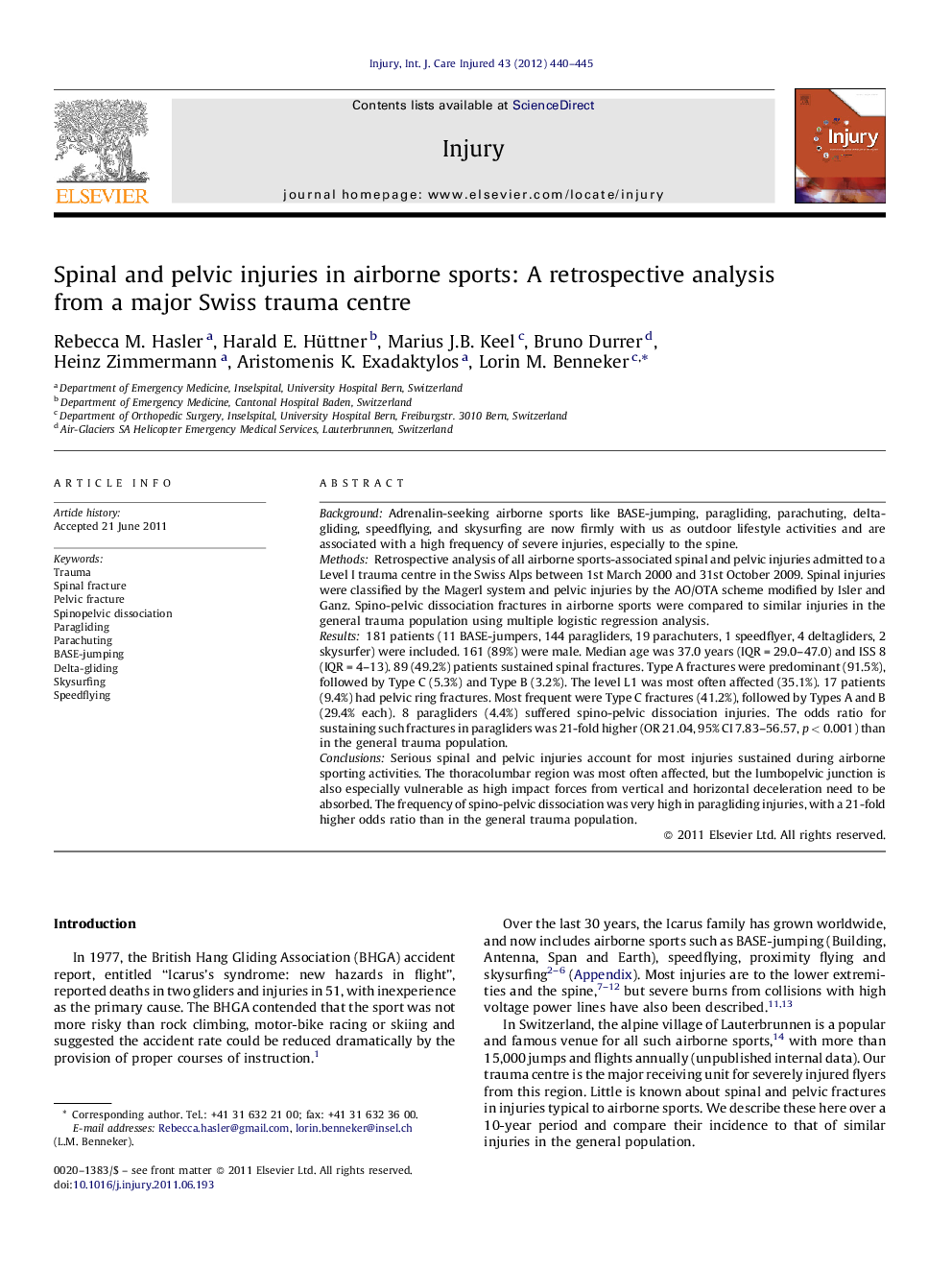| کد مقاله | کد نشریه | سال انتشار | مقاله انگلیسی | نسخه تمام متن |
|---|---|---|---|---|
| 6084302 | 1206049 | 2012 | 6 صفحه PDF | دانلود رایگان |

BackgroundAdrenalin-seeking airborne sports like BASE-jumping, paragliding, parachuting, delta-gliding, speedflying, and skysurfing are now firmly with us as outdoor lifestyle activities and are associated with a high frequency of severe injuries, especially to the spine.MethodsRetrospective analysis of all airborne sports-associated spinal and pelvic injuries admitted to a Level I trauma centre in the Swiss Alps between 1st March 2000 and 31st October 2009. Spinal injuries were classified by the Magerl system and pelvic injuries by the AO/OTA scheme modified by Isler and Ganz. Spino-pelvic dissociation fractures in airborne sports were compared to similar injuries in the general trauma population using multiple logistic regression analysis.Results181 patients (11 BASE-jumpers, 144 paragliders, 19 parachuters, 1 speedflyer, 4 deltagliders, 2 skysurfer) were included. 161 (89%) were male. Median age was 37.0 years (IQR = 29.0-47.0) and ISS 8 (IQR = 4-13). 89 (49.2%) patients sustained spinal fractures. Type A fractures were predominant (91.5%), followed by Type C (5.3%) and Type B (3.2%). The level L1 was most often affected (35.1%). 17 patients (9.4%) had pelvic ring fractures. Most frequent were Type C fractures (41.2%), followed by Types A and B (29.4% each). 8 paragliders (4.4%) suffered spino-pelvic dissociation injuries. The odds ratio for sustaining such fractures in paragliders was 21-fold higher (OR 21.04, 95% CI 7.83-56.57, p < 0.001) than in the general trauma population.ConclusionsSerious spinal and pelvic injuries account for most injuries sustained during airborne sporting activities. The thoracolumbar region was most often affected, but the lumbopelvic junction is also especially vulnerable as high impact forces from vertical and horizontal deceleration need to be absorbed. The frequency of spino-pelvic dissociation was very high in paragliding injuries, with a 21-fold higher odds ratio than in the general trauma population.
Journal: Injury - Volume 43, Issue 4, April 2012, Pages 440-445